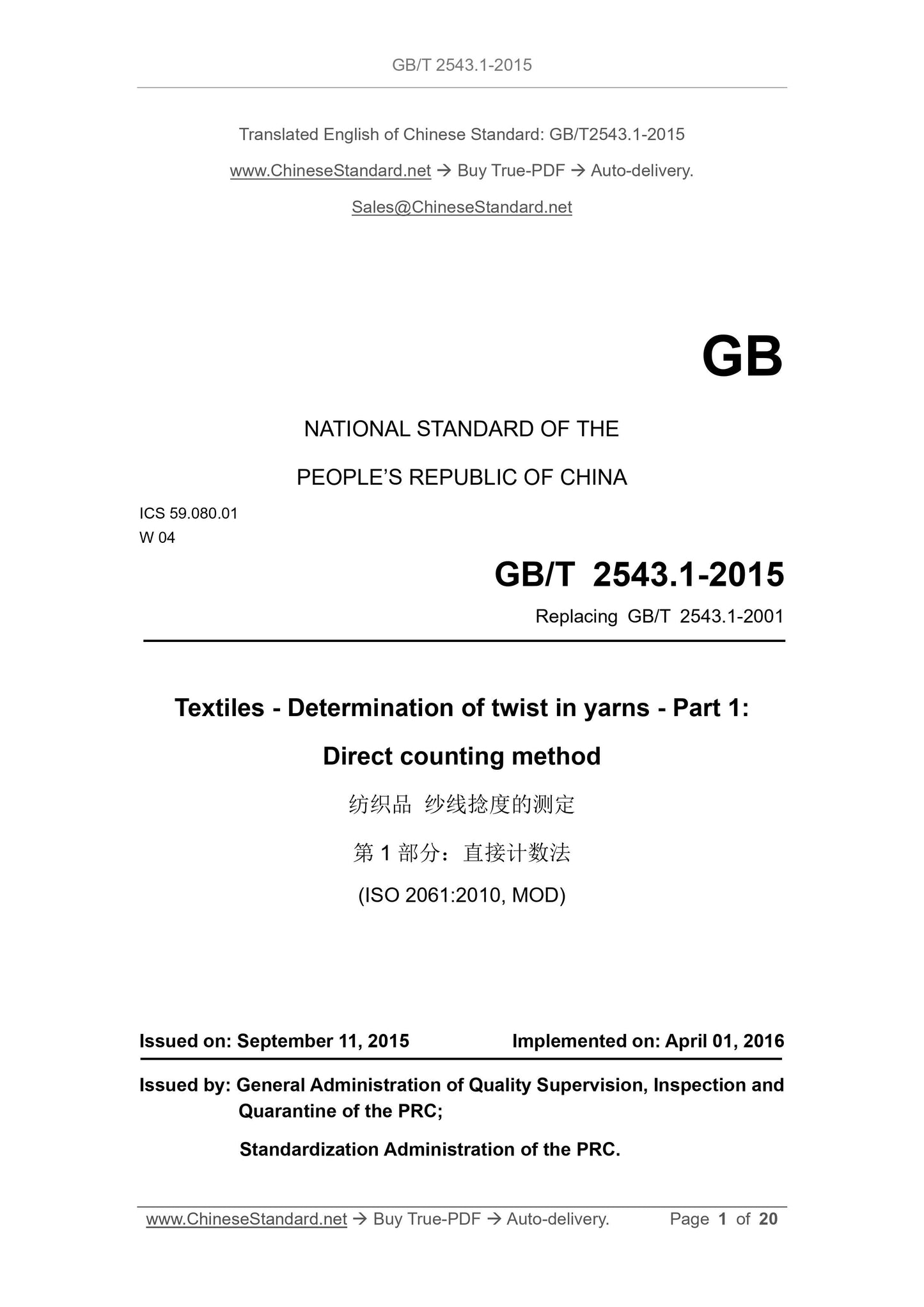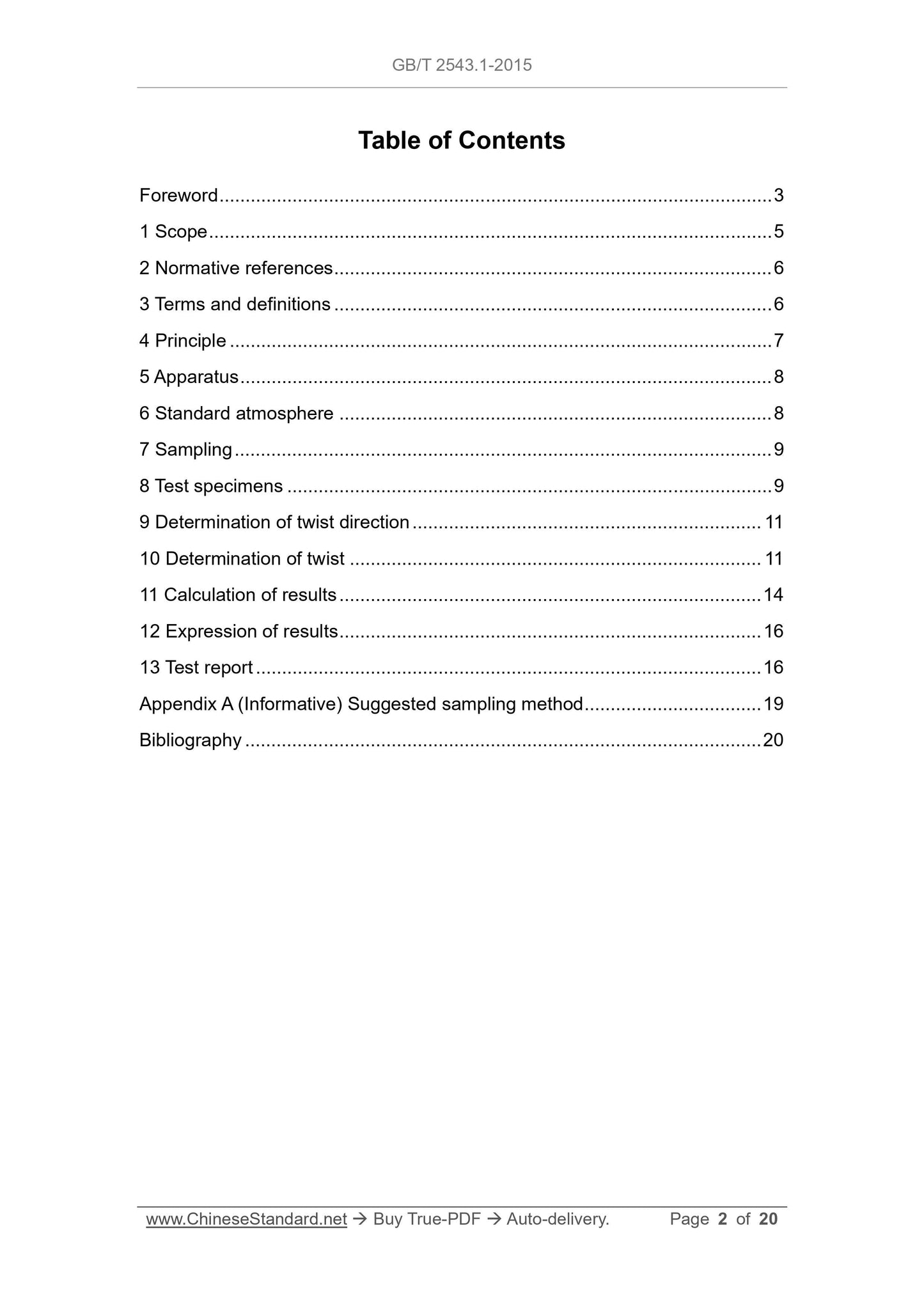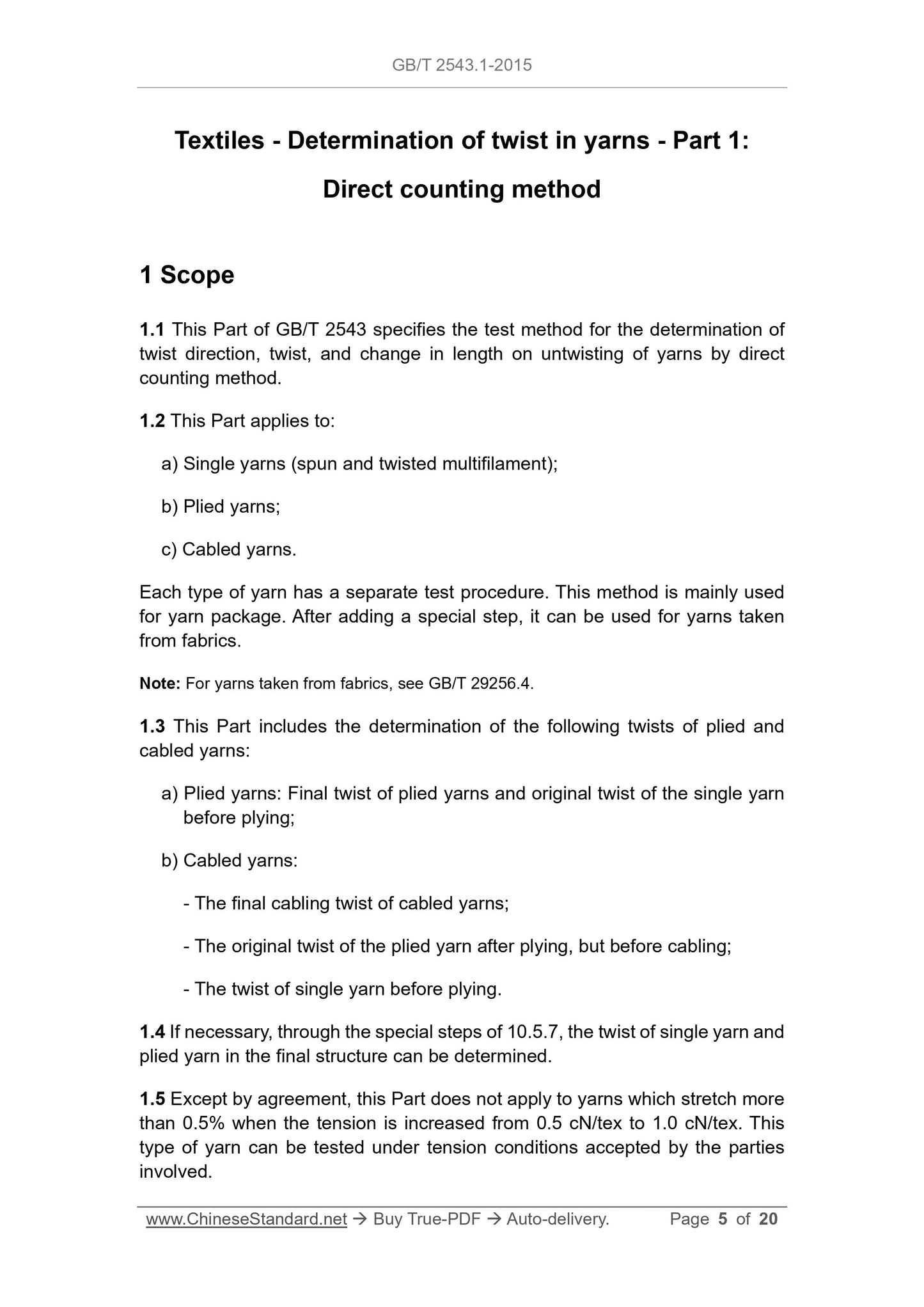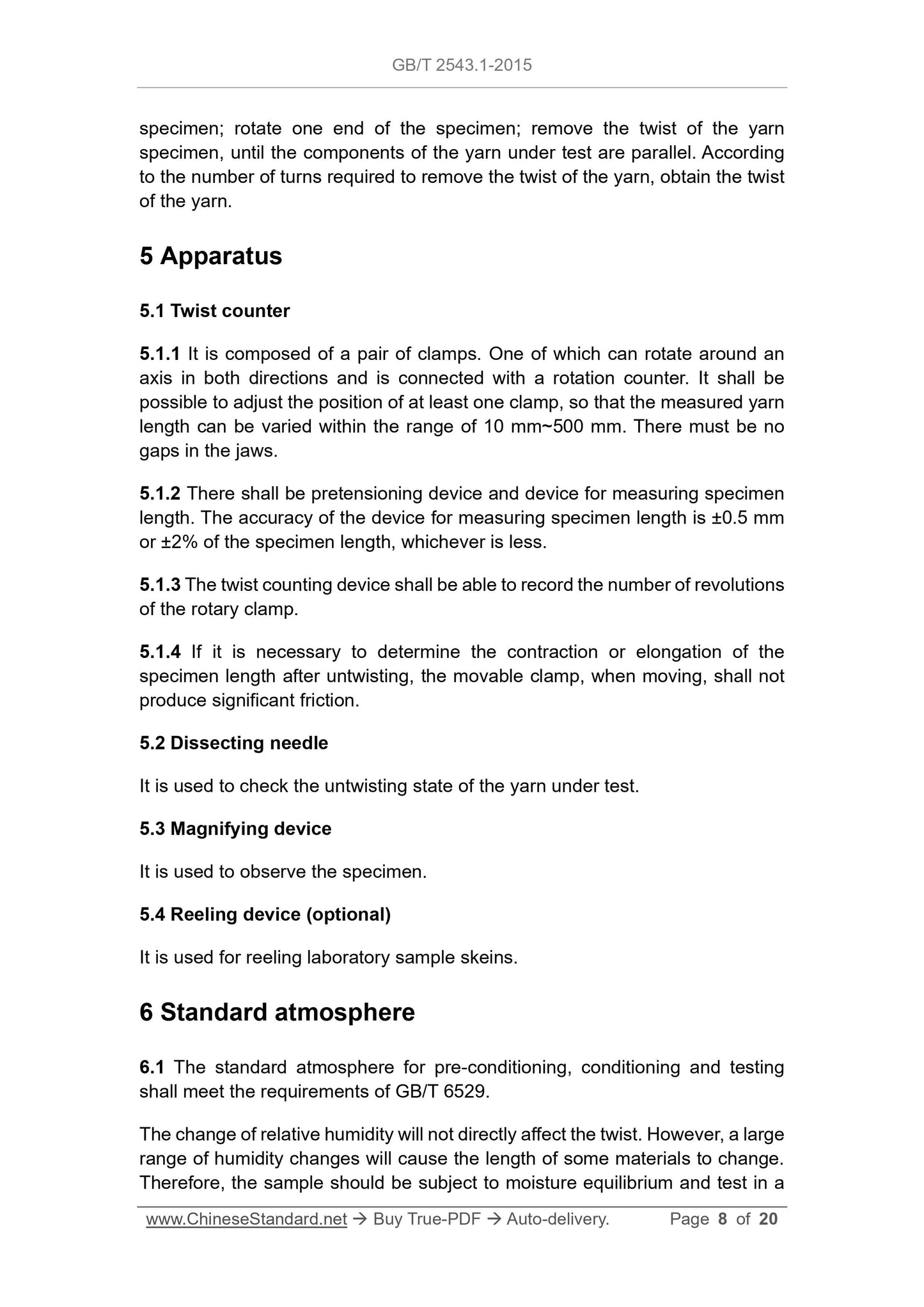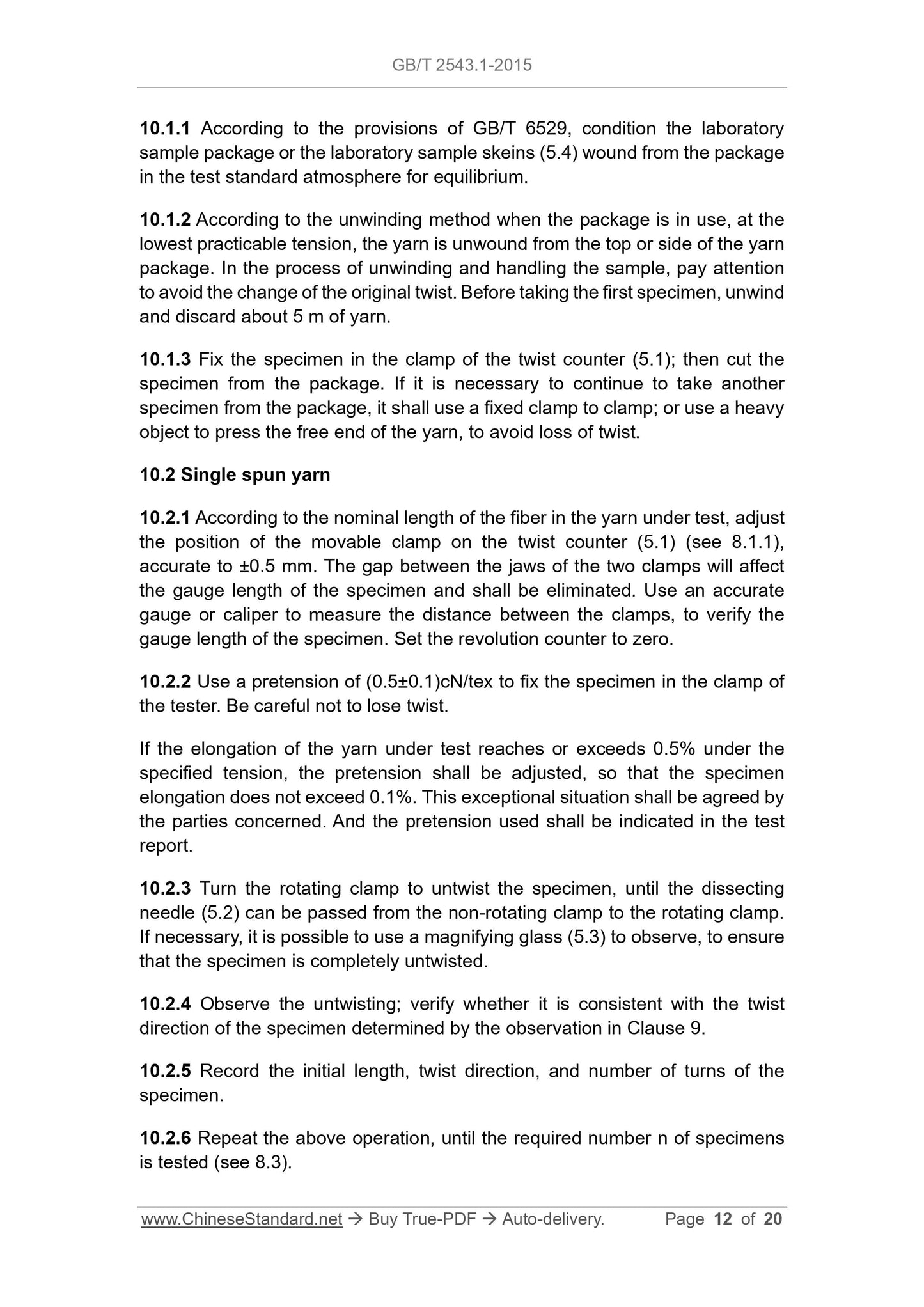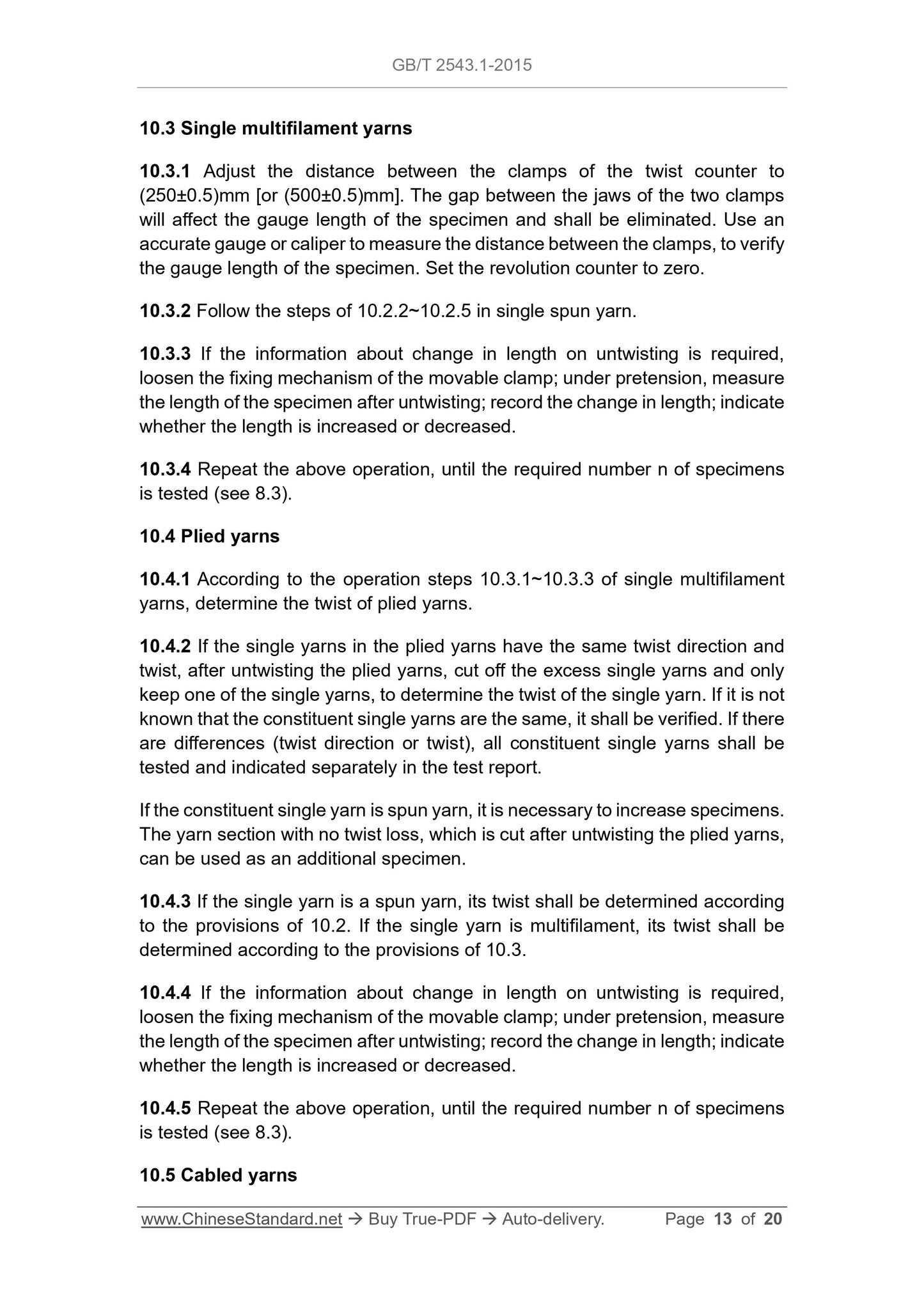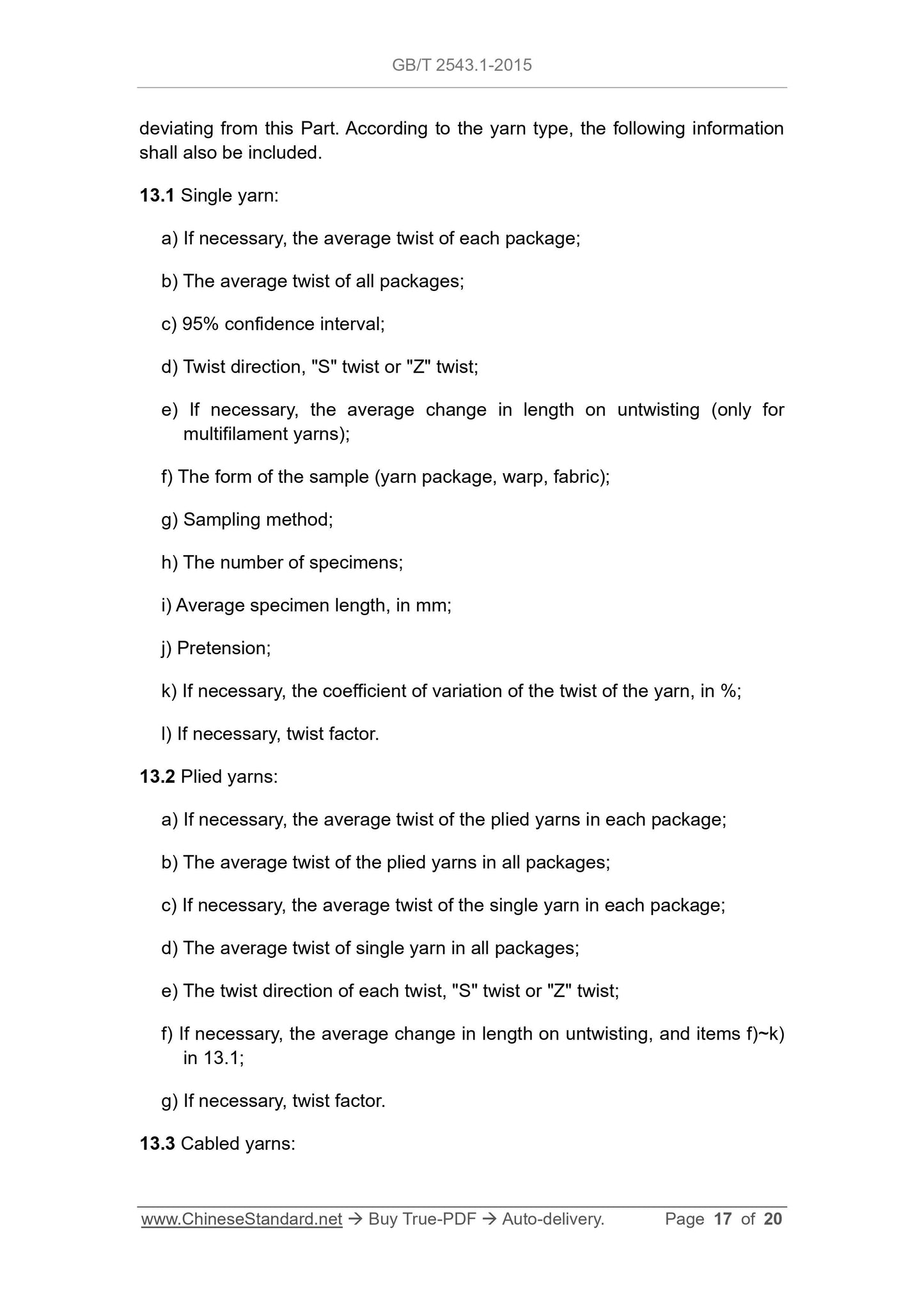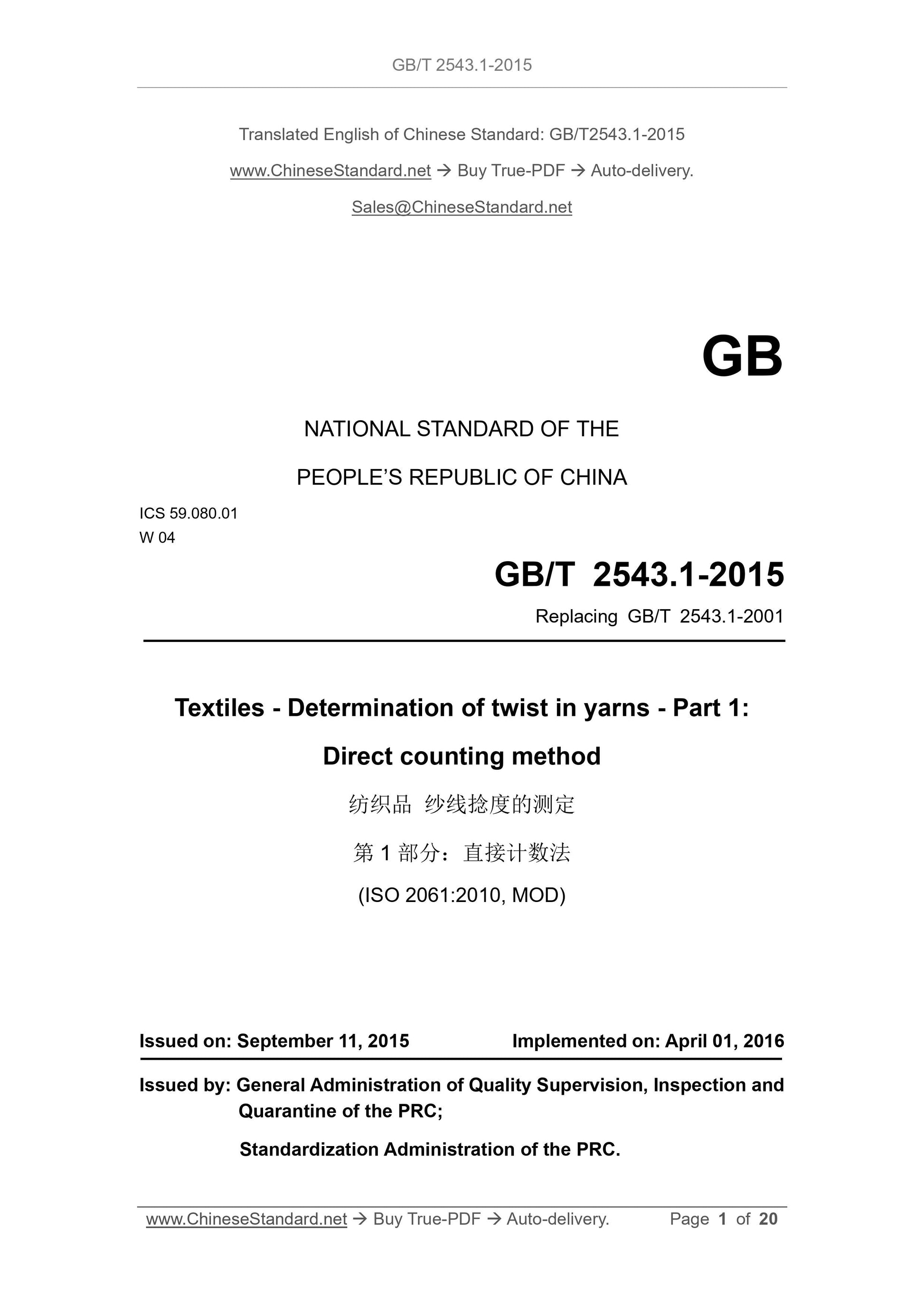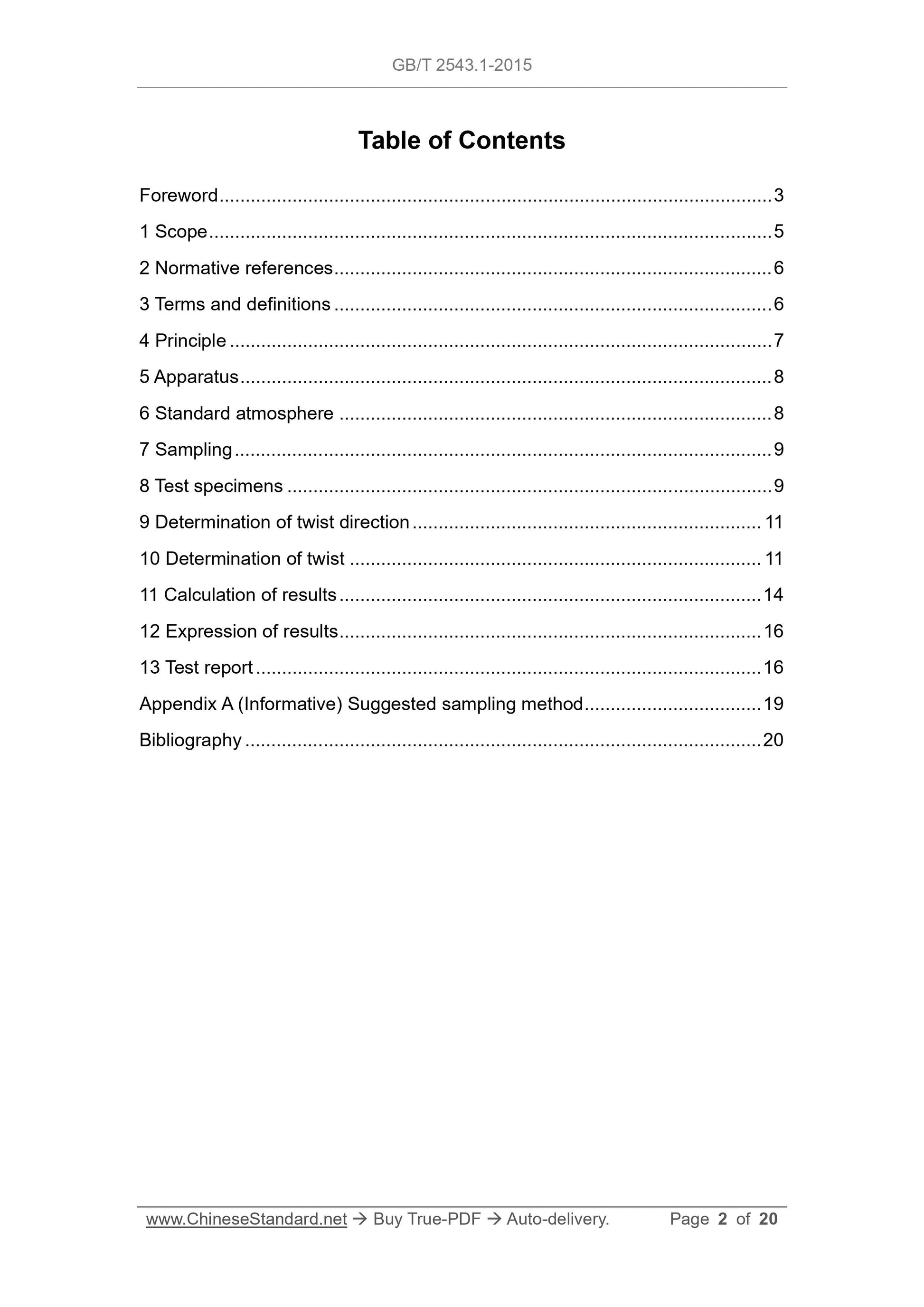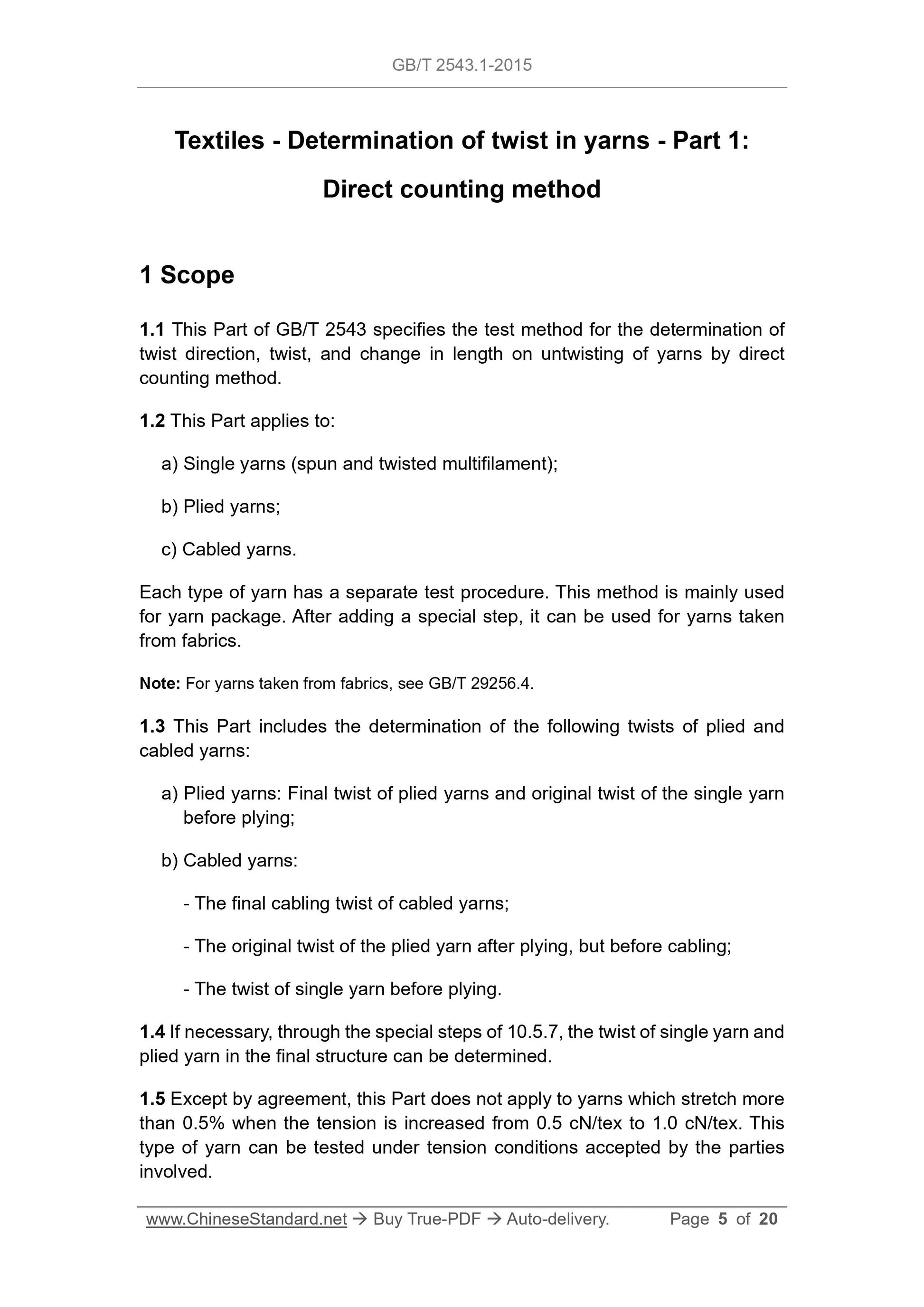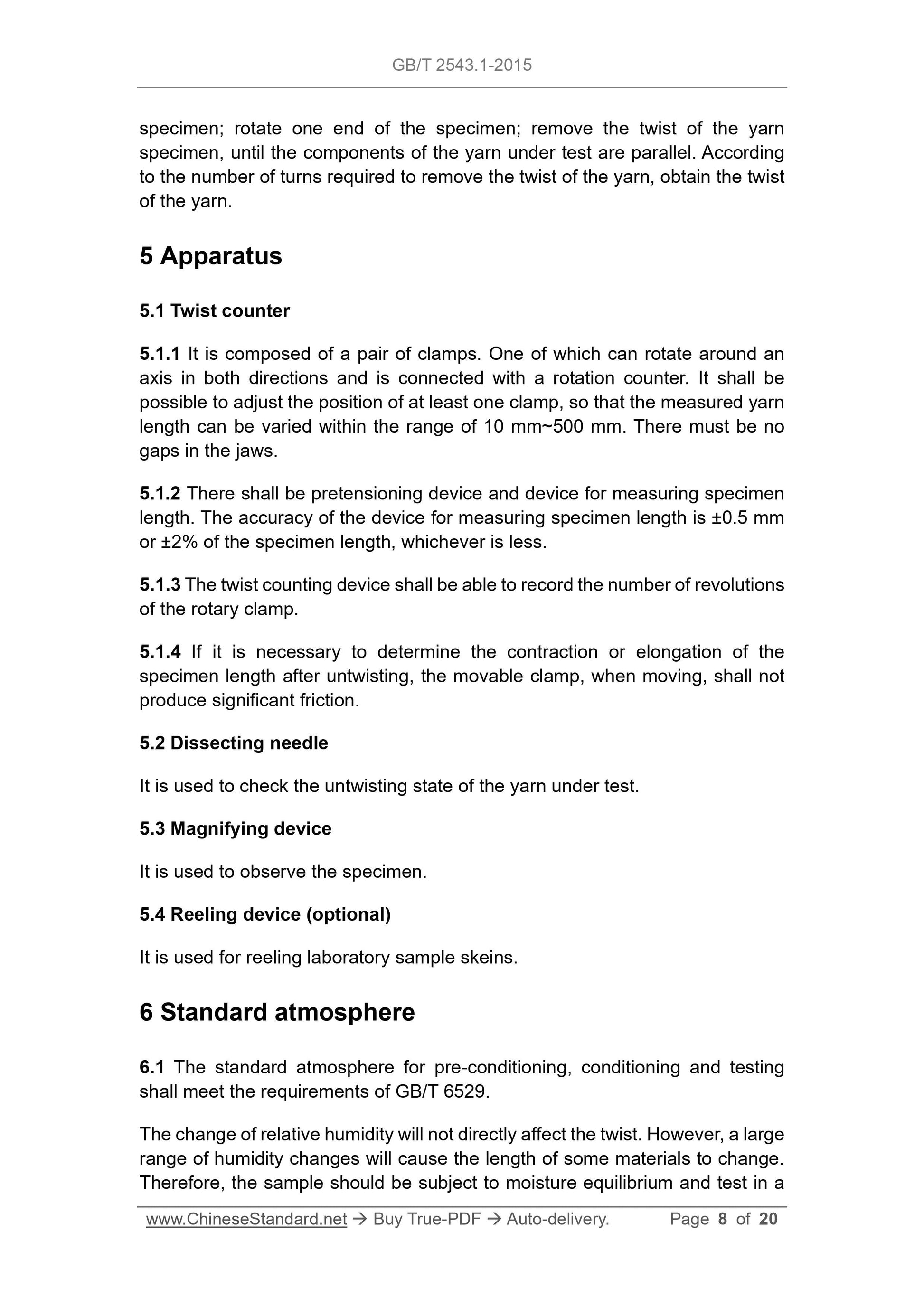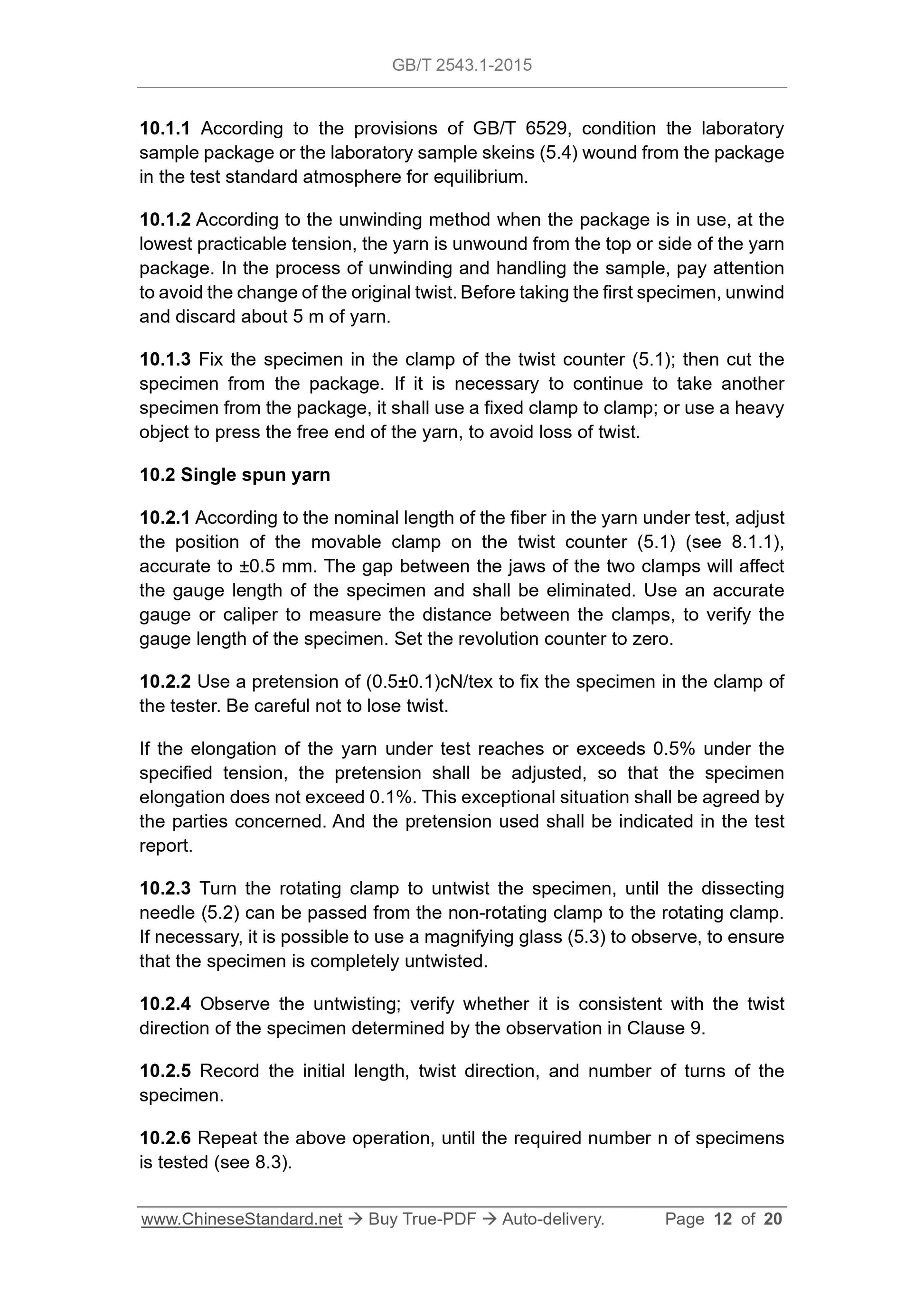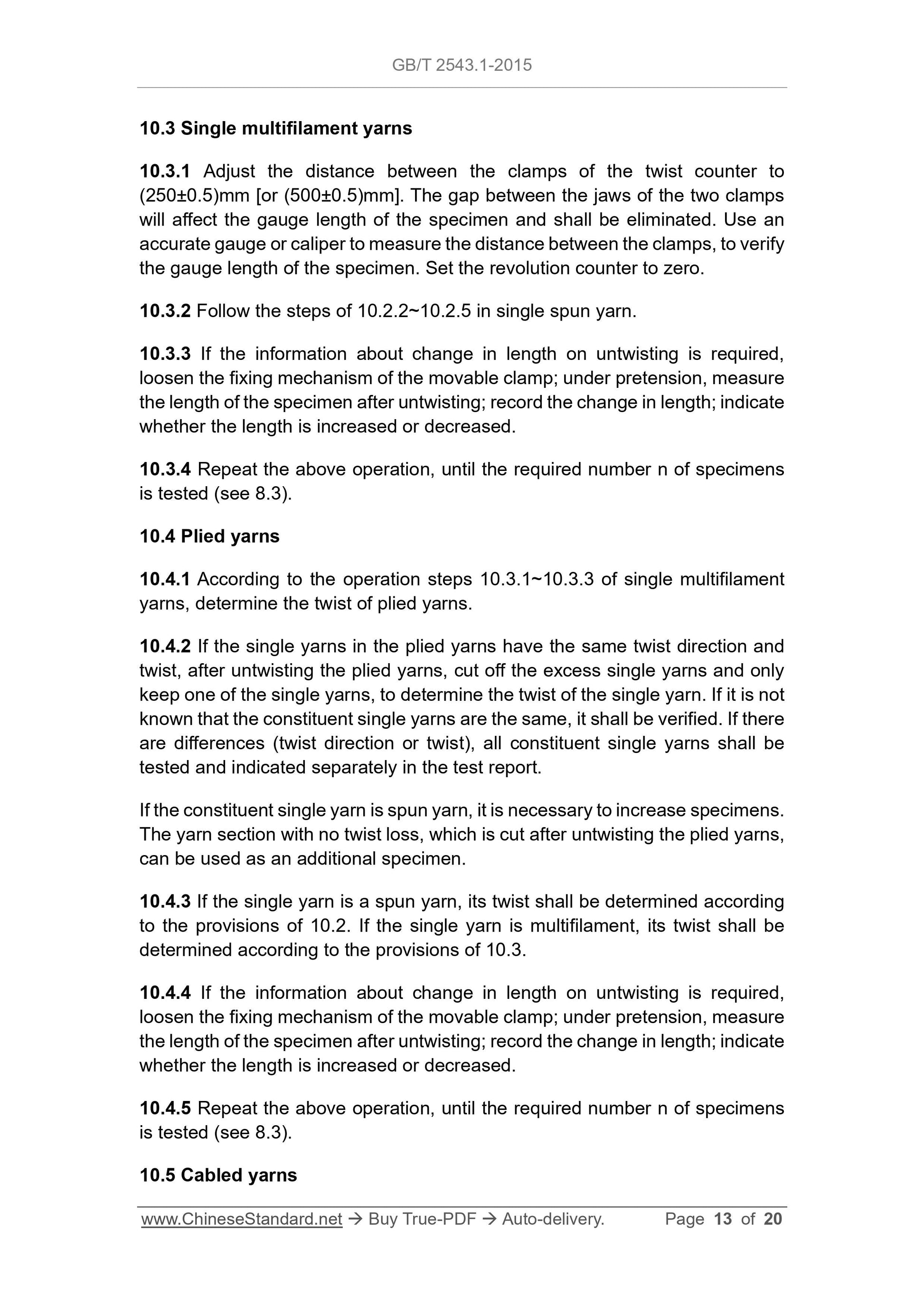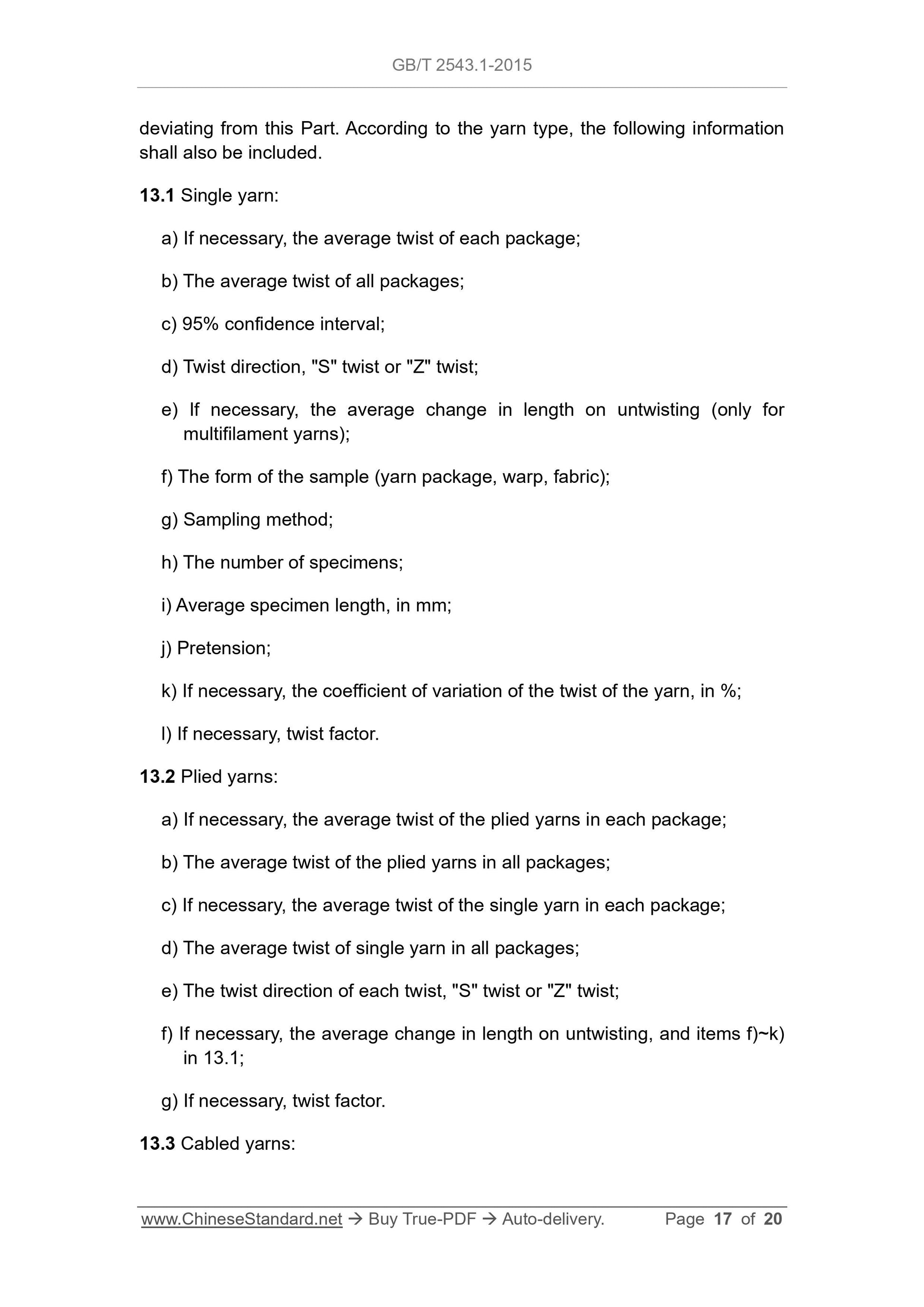1
/
of
7
www.ChineseStandard.us -- Field Test Asia Pte. Ltd.
GB/T 2543.1-2015 English PDF (GB/T2543.1-2015)
GB/T 2543.1-2015 English PDF (GB/T2543.1-2015)
Regular price
$230.00
Regular price
Sale price
$230.00
Unit price
/
per
Shipping calculated at checkout.
Couldn't load pickup availability
GB/T 2543.1-2015: Textiles -- Determination of twist in yarns -- Part 1: Direct counting method
Delivery: 9 seconds. Download (and Email) true-PDF + Invoice.Get Quotation: Click GB/T 2543.1-2015 (Self-service in 1-minute)
Newer / historical versions: GB/T 2543.1-2015
Preview True-PDF
Scope
1.1 This Part of GB/T 2543 specifies the test method for the determination oftwist direction, twist, and change in length on untwisting of yarns by direct
counting method.
1.2 This Part applies to:
a) Single yarns (spun and twisted multifilament);
b) Plied yarns;
c) Cabled yarns.
Each type of yarn has a separate test procedure. This method is mainly used
for yarn package. After adding a special step, it can be used for yarns taken
from fabrics.
Note: For yarns taken from fabrics, see GB/T 29256.4.
1.3 This Part includes the determination of the following twists of plied and
cabled yarns:
a) Plied yarns: Final twist of plied yarns and original twist of the single yarn
before plying;
b) Cabled yarns:
- The final cabling twist of cabled yarns;
- The original twist of the plied yarn after plying, but before cabling;
- The twist of single yarn before plying.
1.4 If necessary, through the special steps of 10.5.7, the twist of single yarn and
plied yarn in the final structure can be determined.
1.5 Except by agreement, this Part does not apply to yarns which stretch more
than 0.5% when the tension is increased from 0.5 cN/tex to 1.0 cN/tex. This
type of yarn can be tested under tension conditions accepted by the parties
involved.
specimen; rotate one end of the specimen; remove the twist of the yarn
specimen, until the components of the yarn under test are parallel. According
to the number of turns required to remove the twist of the yarn, obtain the twist
of the yarn.
Basic Data
| Standard ID | GB/T 2543.1-2015 (GB/T2543.1-2015) |
| Description (Translated English) | Textiles -- Determination of twist in yarns -- Part 1: Direct counting method |
| Sector / Industry | National Standard (Recommended) |
| Classification of Chinese Standard | W04 |
| Classification of International Standard | 59.080.01 |
| Word Count Estimation | 13,110 |
| Date of Issue | 2015-09-11 |
| Date of Implementation | 2016-04-01 |
| Older Standard (superseded by this standard) | GB/T 2543.1-2001 |
| Quoted Standard | GB/T 6529; GB/T 8693 |
| Adopted Standard | ISO 2061-2010, MOD |
| Regulation (derived from) | National Standard Announcement 2015 No.25 |
| Issuing agency(ies) | General Administration of Quality Supervision, Inspection and Quarantine of the People's Republic of China, Standardization Administration of the People's Republic of China |
| Summary | This Standard specifies the twist, twist and untwisting test method length rate of change measured by direct counting of yarn. This section applies to: a) yarn (staple fiber yarns and have twisted multifilament), b) strands; c) cable. This section does not apply to open-end spinning measurement products and entangled multifilament twist. This section does not apply too thick yarn. Such yarn tester jaws will severely hurt rolling deformation, affect the test results. |
Share
